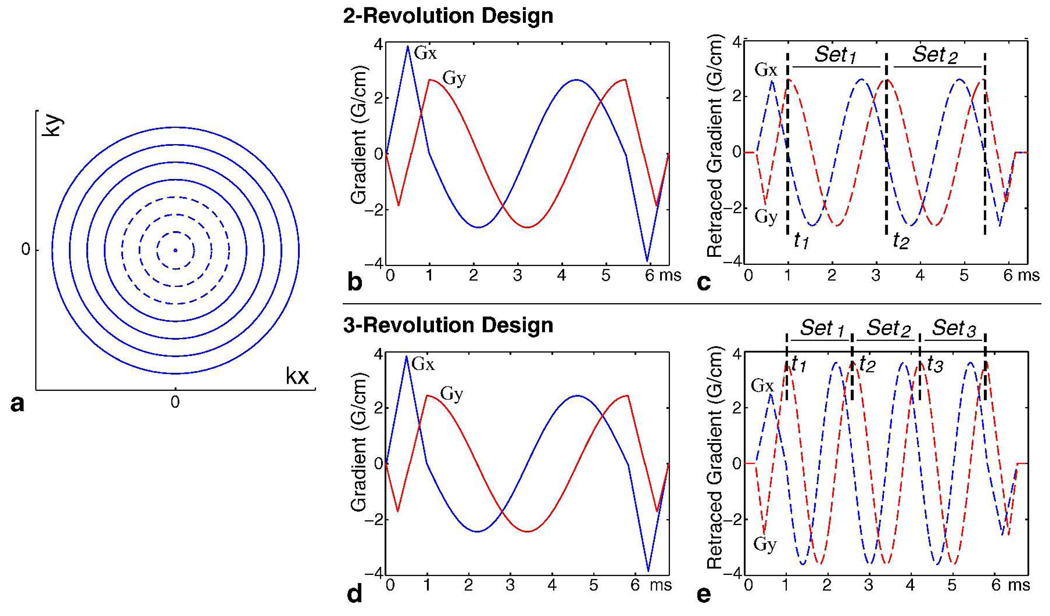FIG. 1.
Concentric Rings Retracing Design. A set of N readout rings is used to cover k-space (a). Gradients are designed for the outermost ring (b) and then scaled down for each ring. We can be more gradient-efficient with the inner readout rings n = 0 … (N/2)−1 (dashed lines in (a)) by using a retracing design (c). The inner rings are sampled over two revolutions, corresponding to Set1 and Set2. This retracing design can be extended to three or more revolutions. Specifically, by slightly lengthening the readout window for the single-revolution outer rings (d), the inner rings can be acquired through three revolutions during the same readout window (e) to produce Set1, Set2 and Set3. The “echo time” of each revolution is defined as the time when the first sample is acquired and indicated by tm.

